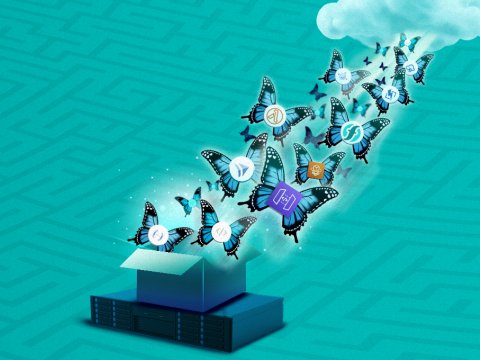Avoiding the Pitfalls of Data Gravity
Take action to release your cloud strategy from the weight of data gravity.
Data gravity refers to the ability of a body of infrastructure to attract applications, services, and other data – the larger that haven becomes, the stronger the pull. GE engineer Dave McCrory first coined the term in 2010, and since then, it’s become one of the biggest challenges in IT.
Beware of the oceanfront
Since the advent of cloud computing, specific data centers in large cities around the world have served as the meeting points for all networks and the clouds. Think of these as the oceanfront real estate of digital infrastructure. Here, the true burden of data gravity occurs as workloads are magnetized to these digital hotbeds, and customers are finding it difficult and costly to move information out.
It’s worth noting that the major hyperscale cloud providers do afford you a discount if you connect to them through a private network to the tune of 90%. But then you must deploy a presence in the oceanfront real estate of digital infrastructure. Thus, there is a higher overall cost associated with that discount, and it is not easily accessible.
The pain of egress fees
Egress fees add up in a hurry. Worse, they’re often underestimated. According to 451 Research’s Voice of the Enterprise: Storage, Transformation 2021, 34% of enterprises say that cloud storage egress charges have affected their organization’s use of cloud storage.
Aside from having a higher cloud storage bill, other consequences were more far-reaching – 37% of those affected by egress fees then switched service providers, while 27% repatriated data from the cloud back to an on-premises venue.
Here’s one familiar scenario: A customer goes all-in with one major cloud provider — let’s call it, “Provider #1.” Moving to the cloud, the customer makes a big investment.
But then another provider (“Provider #2”) introduces a cool, new innovation that the customer’s peers — and many of their key competitors — also are using. Here’s where the dreaded Fear of Missing Out (FOMO) kicks in.
They want to do something about it. But, if the customer wants to transfer data to Provider #2 to utilize its innovative features, they will be hit with a fee from Provider #1, which goes up incrementally, depending on the amount of data they want to move. If the customer decides it’s a worthwhile investment to transfer data to Provider #2, once it’s been processed, the customer might want to send it back to Provider #1 for storage. The customer is then hit with Provider #2 egress fees. For many companies, egress fees contribute to vendor lock-in.
Another common scenario where egress fees become a huge issue is when a company is an acquisition roll-up. Say a company acquires other entities that use different cloud vendors and different geographies, and they want to start collaborating. If they began collaborating right away without integrating (which would take forever), they'd get killed by the international egress fees.
Shedding the weight of data gravity
The COVID-19 pandemic forced IT organizations to focus on resilience via cost-efficiency, optimized support and secure remote work. Gartner survey data indicates that almost 70% of organizations using cloud services today plan to increase their cloud spending in the wake of the global pandemic.
Data gravity, however, remains a huge multicloud inhibitor. You have customers who are looking to solve an immediate problem. And then you have customers who want to ensure that they are not restricted from using any future technologies or multicloud ambitions.
It is time to repatriate data and eliminate data gravity. But how?
Deploy your data to a neutral environment right from the start to avoid data being held hostage and the stress of egress.
It’s critical that you future-proof your data to avoid being burned by egress fees — and so that you don’t miss out on new technologies that are available within specific clouds.
Put your data in a neutral environment with low-latency connectivity to these interconnected digital oceanfront locales. A few solutions are available that offer this service.
By bringing your data to the nexus of all clouds, you ensure agility for your most valued enterprise assets — your information and your IP.

How Are Companies Investing in AI/ML?
About the Authors

Product Director, Private Cloud
Michael Levy
Michael Levy is product director for private cloud at Rackspace Technology. Previously, he was a core member of the CenturyLink team that spun out Cyxtera Technologies. He entered the world of cloud services and internet infrastructure as an analyst for 451 Research where he provided advisory for industry leaders, emerging players, and investors. He lives in Manhattan with his wife, two daughters, and dog.
Read more about Michael LevyRelated Topics


